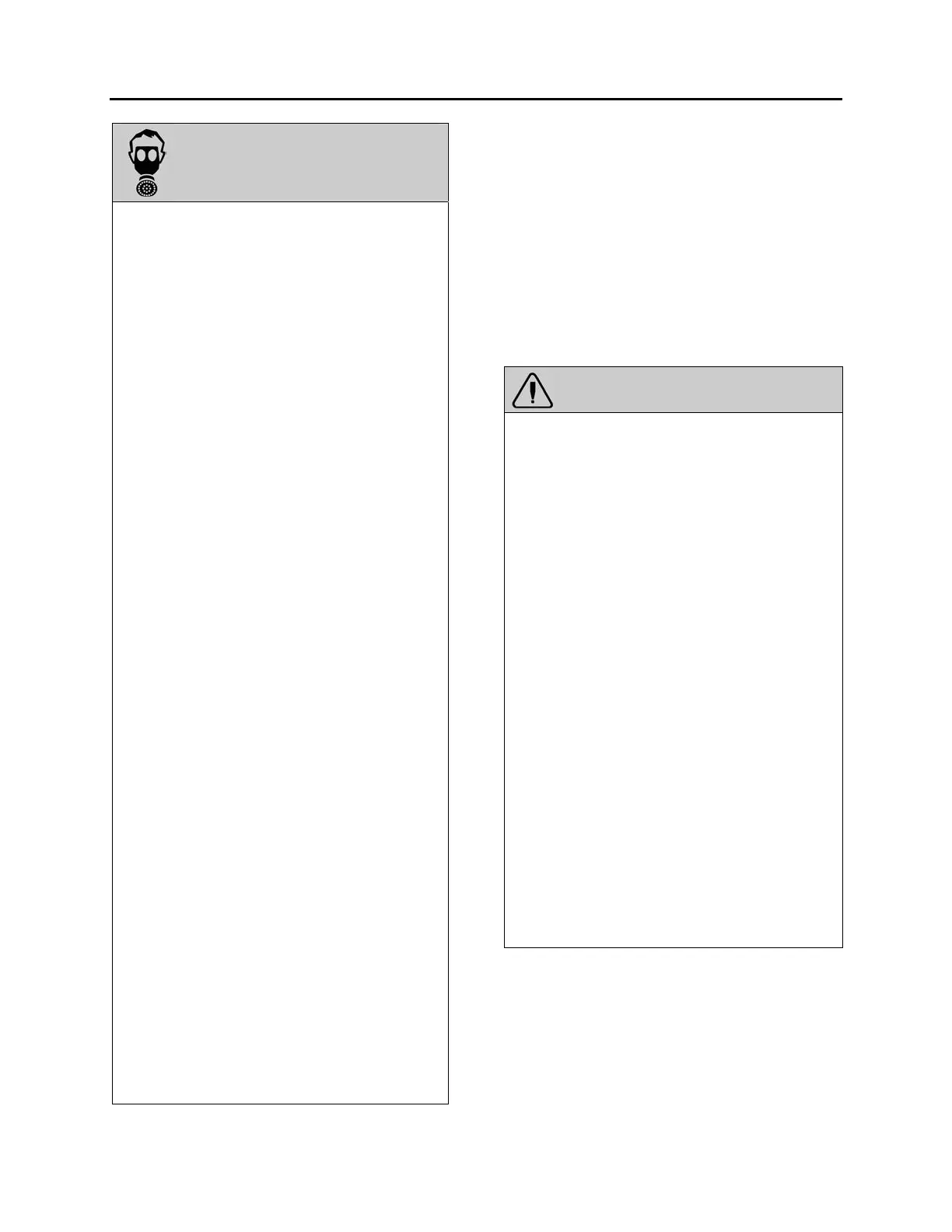Section 12: BRAKE AND AIR SYSTEM
PA1553
19
WARNING
Whenever possible, work on brakes in a
separate area away from other operations.
Always wear a respirator approved by NIOSH
(National Institute of Occupational Safety and
Health) or MSHA (Mine Safety and Health
Administration) during all brake service
procedures. Wear the respirator from removal
of the wheels through assembly.
NEVER use compressed air or dry brushing
to clean brake parts or assemblies. OSHA
recommends that you use cylinders that
enclose the brake. These cylinders have
vacuums with high efficiency (HEPA (Health
and Environment Protection Agency)) filters
and workmans’ arm sleeves. But, if such
equipment is not available, carefully clean
parts and assemblies in the open air.
Clean brake parts and assemblies in the open
air. During disassembly, carefully place all
parts on the floor to avoid getting dust into the
air. Use an industrial vacuum cleaner with a
HEPA filter system to clean dust from the
brake drums, backing plates and other brake
parts. After using the vacuum, remove any
remaining dust with a rag soaked in water and
wrung until nearly dry.
If you must grind or machine brake linings,
take additional precautions because contact
with fiber dust is higher during these
operations. In addition to wearing an
approved respirator, do such work in an area
with exhaust ventilation.
When cleaning the work area, NEVER use
compressed air or dry sweeping to clean the
work area. Use an industrial vacuum with a
HEPA filter and rags soaked in water and
wrung until nearly dry. Dispose of used rags
with care to avoid getting dust into the air.
Use an approved respirator when emptying
vacuum cleaners and handling used rags.
Wash your hands before eating, drinking or
smoking. Do not wear your work clothes
home. Vacuum your work clothes after use
and then launder them separately, without
shaking, to prevent fiber dust from getting into
the air.
Material safety data sheets on this product, as
required by OSHA, are available from
Rockwell and Knorr-Bremse.
27. AIR BRAKE TROUBLESHOOTING
The following tests and check lists have been
designed to identify the cause(s) of a sluggish
performance and/or leaks in the system. These
tests require very little time to perform, and give
you a general idea of the system condition. Each
test is provided with a corresponding check list
which will guide you to the most common
causes of problems.
Before performing any test, check all air lines for
kinks or dents, and hoses for signs of wear,
drying out or overheating.
WARNING
When working on or around brake system and
its related components, the following
precautions should be observed:
Always block vehicle wheels. Stop engine
when working under a vehicle. Keep hands
away from chamber push rods and slack
adjusters as they may apply when system
pressure drops.
Never connect or disconnect a hose or line
containing air pressure. It may whip as air
escapes. Never remove a component or pipe
plug unless you are sure all system pressure
has been depleted.
Never exceed recommended air pressure and
always wear safety glasses when working with
air pressure. Never look into air jets or direct
them at anyone.
Never attempt to disassemble a component
until you have read and understood the
recommended procedures. Some components
contain powerful springs and injury can result
if not properly disassembled. Use only proper
tools and observe all precautions pertaining to
the use of those tools.
Always clean connecting piping and/or fittings,
and coat pipe threads with Teflon pipe sealant
before installing any air brake system
component.

